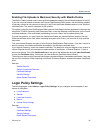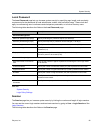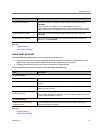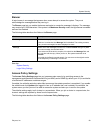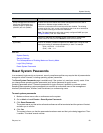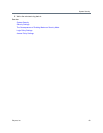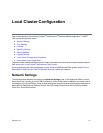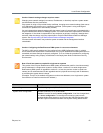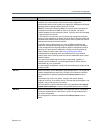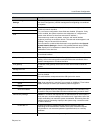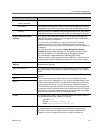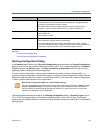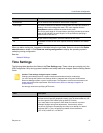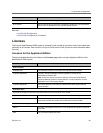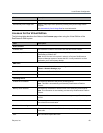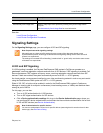
Local Cluster Configuration
Polycom, Inc. 63
System split network setting Specifies whether to combine or split the system’s management and signaling
interfaces. If the same network will be used for both management
(administrative access) and signaling, the signaling IP addresses and Shared
Signaling Network Settings section below are not used.
Caution: Choose split networking only if you need to restrict access to the
management interface and SNMP to users on an isolated “non-public”
network separate from the enterprise network. Typically, this is the case only
in high-security environments.
In most network environments, users accessing the management interface
are on the same network as endpoints and other devices communicating with
the RealPresence DMA system, and they use the same physical and virtual IP
addresses and the same network interface.
To split the network configuration, you must use different gateways and
subnets for management and signaling, and separate physical connections
for the management and signaling networks (eth0 for management, eth2 for
signaling). In a split network configuration, routing rules are necessary for
proper routing of network traffic. See Routing Configuration Dialog.
If management and signaling traffic are combined on the same network
(subnet), both use the same physical and virtual IP addresses and the same
network interface.
If you aren’t sure whether split networking is appropriate, possible, or
necessary for this installation, consult the appropriate IT staff or network
administrator for your organization.
In a split network configuration, routing rules are necessary for proper routing
of network traffic.
Server 1 Status, host name, and IP address(es) of the primary server. The IP type and
network setting determine which of the IP fields in this section are enabled.
The management IP address is disabled if IPv4 boot protocol is set to
DHCP.
Host names may contain only letters, numbers, and internal dashes
(hyphens), and may not include a domain. The reserved values appserv* and
dmamgk-* may not be used for host names.
The host name is combined with the domain name specified under General
System Network Settings to form the fully qualified domain name (FQDN).
Server 2 Status, host name and IP address(es) of the secondary server. The fields in
this section duplicate those in the Server 1 section and are enabled only in
two-server configuration.
The management IP address is disabled if IPv4 boot protocol is set to
DHCP.
Field Description



